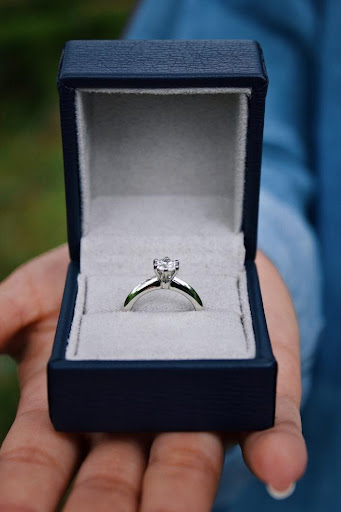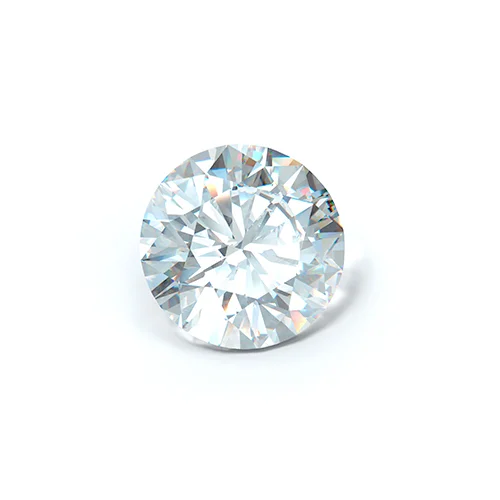
When it comes to choosing a diamond setting, one of the most important decisions you’ll make is whether to go with a four-prong or six-prong setting. The prongs are what hold the diamond in place and protect it from damage, so it’s important to choose a setting that is secure and functional, as well as beautiful. In this article, we’ll take a closer look at the anatomy of a diamond setting and explore the pros and cons of both four-prong and six-prong settings.
- What is a Diamond Setting?A diamond setting is the piece of metal that holds a diamond in place on a piece of jewelry, such as a ring or necklace. The setting is an integral part of the jewelry piece as it determines how securely the diamond is held, how much light is allowed to enter the stone, and how visible the diamond is from different angles.
- Four-Prong SettingsFour-prong settings are the most popular and classic setting option. As the name suggests, a four-prong setting uses four prongs to hold the diamond in place. This type of setting is often used for solitaire engagement rings and allows for maximum light to enter the diamond, enhancing its brilliance and fire.
- Pros of Four-Prong SettingsOne of the main advantages of a four-prong setting is that it allows for maximum light to enter the diamond, which can make the stone appear more brilliant and fiery. Additionally, four-prong settings are typically less expensive than six-prong settings since they require fewer prongs and less metal. They also allow for more of the diamond to be visible, which can enhance the stone’s overall appearance.
- Cons of Four-Prong SettingsThe main disadvantage of a four-prong setting is that it may not be as secure as a six-prong setting. With only four prongs holding the diamond in place, there is a higher risk of the diamond becoming loose or falling out of the setting. Additionally, a four-prong setting may not be suitable for larger diamonds, which require more support and protection.
- Six-Prong SettingsA six-prong setting, also known as a double-prong setting, uses six prongs to hold the diamond in place. This type of setting is often used for larger diamonds or for those who want extra security and protection for their diamond.
- Pros of Six-Prong SettingsThe main advantage of a six-prong setting is that it provides extra security and protection for the diamond. With six prongs holding the diamond in place, it is less likely to become loose or fall out of the setting. This type of setting is also suitable for larger diamonds, which require more support and protection.
- Cons of Six-Prong SettingsThe main disadvantage of a six-prong setting is that it can be more expensive than a four-prong setting since it requires more metal and more prongs. Additionally, a six-prong setting may not allow for as much light to enter the diamond, which can impact the stone’s brilliance and fire.
- Other Factors to ConsiderWhen choosing between a four-prong and six-prong setting, there are a few other factors to consider as well. For example, the style of the jewelry piece can influence which type of setting is best. A solitaire engagement ring may look better with a four-prong setting, while a more elaborate engagement ring may require a six-prong setting for added security.
- DurabilityWhen it comes to durability, a six-prong setting is generally considered to be more secure than a four-prong setting. The extra prongs provide added protection for the diamond, keeping it securely in place and reducing the risk of it becoming dislodged or falling out. This can be particularly important for those who lead an active lifestyle or work with their hands, as their ring may be exposed to more wear and tear.However, it is worth noting that both four-prong and six-prong settings can be equally durable if they are well-made and cared for properly. Regular maintenance and inspections by a professional jeweler can help identify any potential issues with the setting and ensure that the diamond remains secure.
- Maintenance and CleaningRegardless of which type of setting you choose, it’s important to properly maintain and clean your diamond jewelry to keep it looking its best. Both four-prong and six-prong settings require regular cleaning to prevent the buildup of dirt and grime, which can dull the shine of your diamond. Here are some tips for maintaining and cleaning your diamond jewelry:
- Use a soft-bristled toothbrush or a jewelry brush to gently scrub the diamond and setting with a mixture of warm water and mild dish soap.
- Rinse the diamond and setting thoroughly under running water to remove any soap residue.
- Pat the diamond and setting dry with a soft, lint-free cloth, being careful not to snag the prongs or setting.
- Avoid exposing your diamond jewelry to harsh chemicals or abrasive materials, such as chlorine or sand, which can damage the setting or scratch the diamond.
- Have your diamond jewelry professionally cleaned and inspected by a jeweler at least once a year to ensure that the setting is secure and the diamond is in good condition.
- Consider having your diamond jewelry re-tipped or re-pronged if the prongs become worn or damaged, as this can help prevent the diamond from becoming loose or falling out.
By following these simple maintenance and cleaning tips, you can help ensure that your diamond jewelry stays looking its best for years to come.
Conclusion
In conclusion, the decision between a four-prong and six-prong setting ultimately comes down to personal preference, budget, and lifestyle. Both options offer their own advantages and drawbacks, and it is important to carefully consider each one before making a final decision. By doing so, you can ensure that your diamond setting not only looks beautiful but also provides the necessary protection for your precious diamond.

